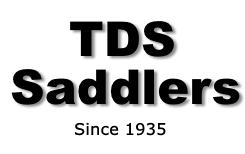Bridle Fitting and Size Guide
Bridle Fitting and Sizes
Bridle Sizes
Head Piece Size
(including cheek pieces):
1. Cob = 38″
2. Full = 41 3/4″
3. Extra Full = 46″
Brow Band Size:
1. Cob size = 15″
2. Full size = 16.5″
3. Extra Full = 17.5″
Noseband Sizes:
1. Cob = 23″
2. Full = 25″
3. Extra Full = 27″
Tips for Correct Fitting and Comfort
- Make sure the browband is not too tight and is not pulling the headpiece onto the back of the ears. The current trend is for the browband to be slightly loose.
- The throat lash must not be tight, as it will interfere with breathing and collection. To ensure comfort there should be enough room to place a clenched fist between the side of the horse’s cheek and throat lash.
- The buckles of the cheek pieces and noseband should be parallel and slightly below the corner of the eye (to avoid damage in the event of the bridle pulling across the face), and the arms of the cheeks and noseband must lie behind the horse’s cheekbones.
- The noseband must lie at least one finger or 1cm below the cheekbones, as this is another pressure point area. If the noseband is placed too high on the face it can cause great pain.
- The buckle of the cavesson noseband must sit comfortably at the back of the jaw, in between the jawbones, to avoid creating a pressure point.
- The pad on the back of the crank noseband fastening should not connect to the front of the noseband, as this can cause pinching and subsequent sores.
Tailor-made to perfection with a patented design, the Original British KB Snaffle Bridle has an almost infinite range with over 68,000 options available. Designed with Klaus Balkenhol, the Original KB Bridle minimises pressure, maximises comfort, aids willing submission and improves performance at all levels
The KB Snaffle Bridle features a cutaway headpiece. The slip is anatomically positioned over the padded headpiece to disperse poll pressure. The KB also features an oversized browband to ensure ear clearance to minimise nerve pressure and has a padded noseband for extra comfort
Made from the very best full grain bridle butts the KB which is without doubt one of the most popular bridles on the market today. Renowned for its quality and durability it enhances every horse
The Importance of Proper Bridle Fitting
Proper bridle fitting is crucial in equestrian sports and horse care. It ensures your horse’s comfort, performance, and safety. An ill-fitted bridle can lead to discomfort and behavioural issues, or even injuries in the worst cases. Recognizing the importance of bridle fitting is the first step towards a harmonious and productive relationship with your horse.
Steps to Proper Horse Bridle Fitting
When it comes to fitting a bridle, one size does not fit all. Each horse is unique, requiring careful measurements for the perfect fit. Start by measuring your horse’s head length, browband, and noseband sizes. Then apply these measurements while choosing the correct bridle size, adjusting it to your horse’s specific dimensions to ensure a comfortable and secure fit.
Adjustment Tips
Adjusting each part of the bridle correctly is integral to the horse bridle fitting process. Make sure the browband is not too tight or loose, the throat latch allows comfortable breathing and movement, and the cheek pieces and noseband are parallel and slightly below the horse’s eye to avoid potential injuries. Remember, each adjustment made should prioritize your horse’s comfort and safety.
Bridle Fit Checklist
To ensure a perfect fit every time you tack up, develop a bridle fit checklist. Check for any pressure points, ensure there’s enough clearance at the ears, and there’s sufficient space at the throat latch. Regular checks can help maintain your horse’s comfort and prevent potential problems down the line. See our bridle range.
Materials and Bridle Fitting
The material of your bridle can significantly affect its fit and comfort. Whether you choose leather or synthetic, each has its own qualities that need to be taken into account during the equestrian bridle fitting process. Regular care and maintenance of these materials ensure they remain supple, safe, and comfortable for your horse.
Bridle Fitting for Different Horse Breeds
Fitting a bridle can vary depending on your horse’s breed due to differences in head shapes and sizes. Whether you have a cob or a thoroughbred, understanding these nuances is crucial in ensuring your bridle is fitted correctly. Tailoring your bridle fitting techniques to your horse’s specific breed can greatly enhance their comfort and performance.
Common Mistakes in Bridle Fitting
Avoiding common mistakes in bridle fitting can help ensure your horse’s comfort. Failing to adjust the bridle according to your horse’s specific dimensions or ignoring signs of discomfort are common errors. Awareness of these pitfalls can help you avoid them and ensure a more comfortable and efficient bridle fitting process.
The Role of a Professional in Bridle Fitting
While horse owners can undertake bridle fitting, there are cases where a professional’s expertise is invaluable. Especially for competition horses or if the horse shows signs of discomfort that can’t be resolved with simple adjustments, a professional can provide an accurate fitting and advice. Acknowledging when professional help is needed is an essential aspect of responsible horse care.
